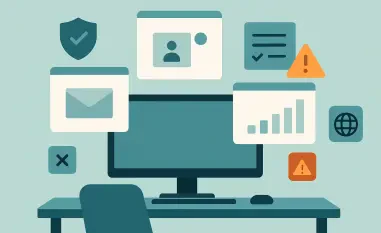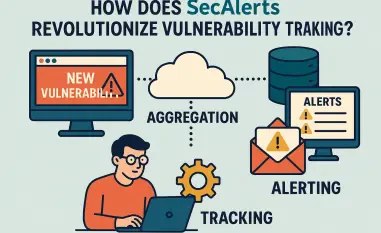In the ever-evolving landscape of cybersecurity, remote monitoring and management (RMM) tools have become indispensable for enterprises and managed service providers (MSPs). However, a recent discovery of two critical vulnerabilities in ConnectWise Automate, a widely used RMM solution, has sent ripples through the IT community, raising urgent concerns about data security. With potential risks like data interception and malicious tampering on the line, how are industry experts and organizations responding to this pressing security challenge? This roundup gathers diverse opinions, actionable tips, and strategic insights from multiple sources to shed light on the implications of these flaws and the best paths forward for securing IT environments.
Understanding the Vulnerabilities: A Spectrum of Concerns
Cleartext Data Exposure: Unpacking CVE-2025-11492
The first vulnerability, tagged as CVE-2025-11492, has a staggering CVSS score of 9.6, highlighting its critical nature. It involves the transmission of sensitive data in cleartext, creating a window for attackers to intercept information via man-in-the-middle (MiTM) attacks. Many cybersecurity professionals have expressed alarm over how this flaw could compromise entire networks, especially in on-premises setups where network access conditions might not be tightly controlled.
Industry analysts have pointed out that while the risk is severe, exploitation often requires specific conditions, such as an attacker already having a foothold within the network. Some argue this slightly mitigates the immediate threat but stress that complacency could be disastrous. The consensus leans toward rapid action, with several IT security blogs emphasizing the importance of understanding network configurations to prevent such exposures.
A differing perspective comes from smaller MSPs, who highlight the resource constraints they face in addressing such high-priority issues. Many note that while the danger is real, the complexity of securing legacy systems against cleartext vulnerabilities often delays response times, leaving systems exposed longer than ideal. This underscores a broader need for accessible guidance tailored to organizations with limited IT staff.
Integrity Gaps in Code Downloads: Exploring CVE-2025-11493
The second flaw, CVE-2025-11493, with a CVSS score of 8.8, stems from a lack of integrity checks during code downloads, potentially allowing attackers to replace legitimate updates with malicious content. Cybersecurity forums have been abuzz with discussions on how this vulnerability amplifies risks in environments using insecure HTTP configurations, a common oversight in on-premises deployments.
Some experts caution that the real-world impact could be catastrophic if attackers exploit this flaw to deliver ransomware or other harmful payloads. They advocate for immediate scrutiny of communication protocols, urging organizations to abandon outdated setups. This view is particularly strong among larger enterprises that have witnessed the cascading effects of update tampering in past incidents.
On the other hand, a segment of the IT community argues that while the threat is significant, the operational challenges of updating systems without disrupting services cannot be ignored. Several MSP-focused discussion groups suggest that ConnectWise should provide more detailed interim workarounds for organizations unable to patch immediately. This debate reveals a tension between security imperatives and practical business constraints.
ConnectWise’s Response: Varied Opinions on Automate 2025.9
Effectiveness of the Patch: Security Reinforcement or Partial Fix?
ConnectWise rolled out the Automate 2025.9 update to address these vulnerabilities, enforcing HTTPS for agent communications to curb data exposure and recommending TLS 1.2 for secure setups. Many in the cybersecurity space have praised this move as a decisive step, noting that mandatory HTTPS significantly reduces the attack surface for MiTM exploits. Online reviews from IT professionals often highlight the update’s focus on modern security standards as a positive signal.
However, not all feedback is glowing. Some industry watchers argue that while the patch tackles immediate risks, it doesn’t fully address underlying configuration issues that persist in on-premises environments. A few tech blogs have raised concerns about whether enforcing HTTPS alone can safeguard against sophisticated attackers who might exploit other weaknesses. This critique suggests a need for broader configuration audits alongside patching.
Another viewpoint from user communities emphasizes the timing and communication of the update. Several MSPs have noted that while the patch is effective, clearer documentation and faster alerts from ConnectWise could have helped prioritize deployment. This spectrum of opinions reflects a shared recognition of the update’s value, tempered by calls for more comprehensive support and transparency.
Industry Trends: How Does ConnectWise Compare?
Beyond the specific patch, the incident has sparked discussions on RMM security trends across the sector. Many cybersecurity analysts commend ConnectWise for its proactive stance, comparing it favorably to other vendors who have been slower to address similar flaws. Reports from industry panels suggest that ConnectWise’s emphasis on HTTPS and TLS aligns with a growing push toward stricter protocols in remote management tools.
Contrasting opinions emerge when looking at long-term strategies. Some experts argue that vendors, including ConnectWise, must invest more in educating users about secure configurations rather than relying solely on patches. Online forums for IT administrators often echo this sentiment, with many users feeling that vendor-provided training on security best practices remains insufficient compared to the evolving threat landscape.
A third perspective focuses on competitive dynamics, with some sources noting that other RMM providers are leveraging such incidents to promote their own tools as inherently more secure. This competitive angle has led to mixed reactions, with certain MSPs questioning whether security claims from rival vendors hold up under scrutiny. The debate underscores an industry-wide need for standardized security benchmarks to guide users effectively.
Practical Takeaways: Tips from the Field
Immediate Actions for MSPs and Enterprises
Drawing from various IT security communities, one clear tip is the urgency of deploying the Automate 2025.9 update without delay. Multiple user groups stress that delaying patches in RMM tools can invite catastrophic breaches, especially given their central role in IT infrastructure. This advice is often paired with recommendations to verify that all agent communications are secured via HTTPS post-update.
Another practical insight comes from technical blogs that advocate for a thorough audit of network settings alongside patching. Many suggest double-checking for any lingering use of HTTP or outdated TLS versions, as these can undermine even the most robust updates. This step is seen as critical for on-premises deployments, where misconfigurations are more common.
A final piece of advice from industry roundtables is to establish a routine update schedule to prevent future vulnerabilities from lingering. Several MSPs share that automating patch management processes has helped them stay ahead of threats, reducing the manual burden. This proactive approach is frequently cited as a cornerstone of resilient RMM security.
Long-Term Strategies for Robust Defense
Looking beyond immediate fixes, numerous cybersecurity platforms recommend fostering a culture of continuous security awareness within organizations. This includes regular training for IT teams on emerging threats and best practices for RMM tool management. Such strategies are often highlighted as vital for bridging the gap between vendor updates and user preparedness.
Differing insights emerge on collaboration between vendors and users, with some online discussions pushing for more open dialogue. Many IT professionals believe that platforms for sharing real-time threat intelligence could enhance response times to vulnerabilities. This idea gains traction among those who see shared responsibility as key to long-term security.
Additionally, a recurring tip from enterprise-focused analyses is to diversify security measures beyond vendor patches. Implementing layered defenses, such as network monitoring tools and endpoint protection, is often advised to complement updates like Automate 2025.9. This multifaceted approach is viewed as essential in a landscape where RMM tools remain prime targets for attackers.
Reflecting on the Roundup: Key Actions and Next Steps
Looking back, this exploration of critical flaws in ConnectWise Automate revealed a broad spectrum of insights from industry professionals, MSPs, and cybersecurity analysts. The discussions underscored the severity of data exposure and tampering risks, while also highlighting the varied effectiveness of the Automate 2025.9 patch. Differing views on vendor responsibilities and user readiness painted a complex picture of RMM security challenges.
Moving forward, organizations are encouraged to prioritize not only the immediate deployment of patches but also comprehensive audits of their network configurations to eliminate lingering risks. A deeper collaboration with vendors to access tailored guidance and real-time threat intelligence emerged as a vital next step. For those seeking to bolster their defenses further, exploring additional resources on secure RMM practices and staying updated on industry trends from 2025 onward is strongly advised as a pathway to sustained resilience.













